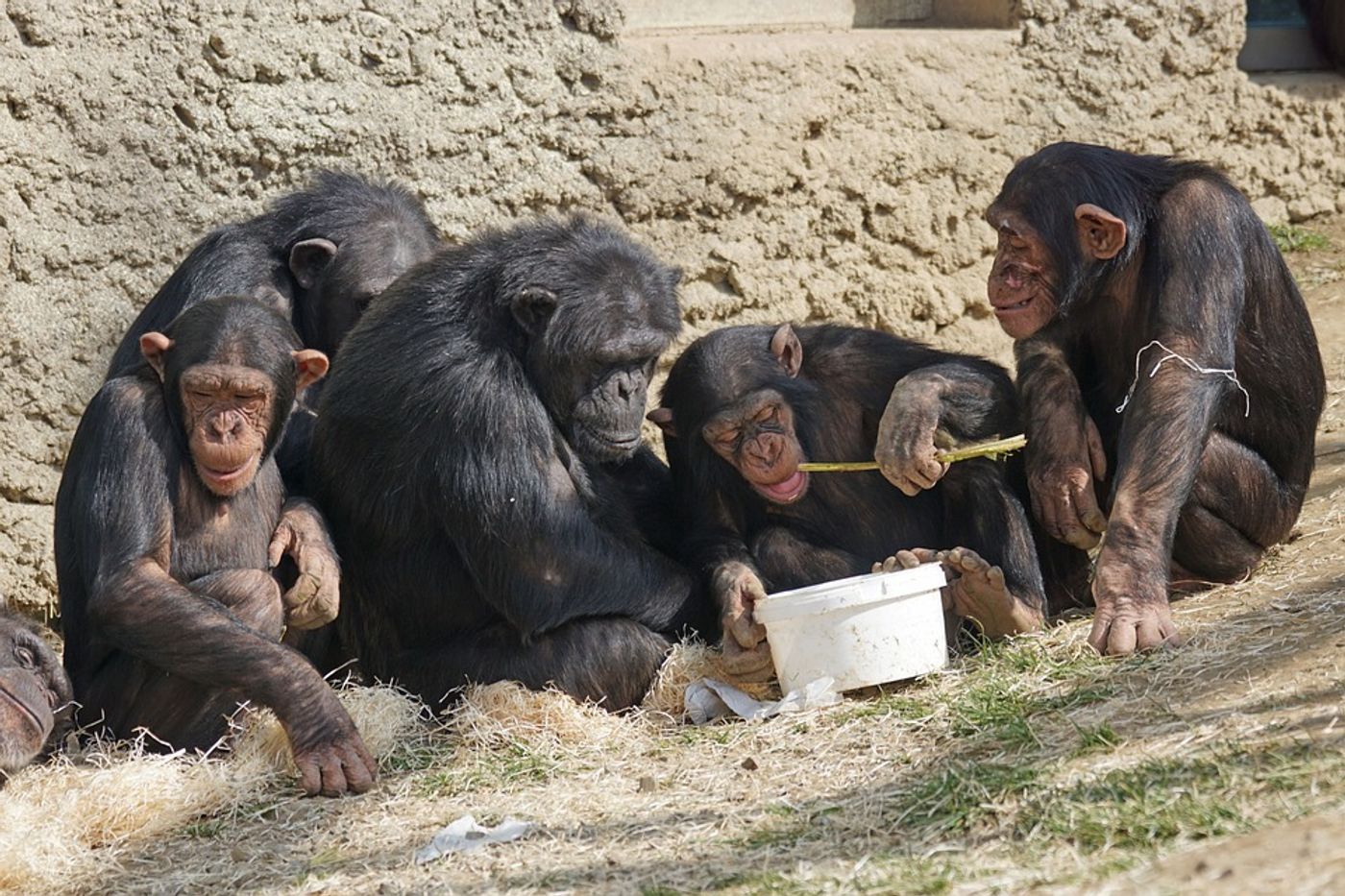Chimpanzees and gorillas may be friends after all
Chimpanzees and gorillas are both historically known as territorial and violent species. Both species have been known to practice infanticide, kill subordinate members of their groups, and also attack and kill members of neighboring groups. But, a new study published in the new open-access journal iScience, may overturn our previous knowledge.
Led by Crickette Sanz from Washington University, a new discovery suggests that both chimpanzees and gorillas can form lasting friendships with each other. These inter-species friendships can last for at least 20 years, and include playing, eating, and socializing together.
The study—based on over 20 years of data from the Ndoki Forest in the Democratic Republic of Congo—found that young adult males most often sought friends from the other species, and would travel long distances to see each other; other pairs of interspecies friends included mothers with young offspring.
These observed interactions lead researchers to ask why there are affiliative behaviors between the two species. They eat similar foods and while theoretically this would increase competition between the two, it could also be that following each other means more food for everyone, as they can help each other locate food. There could also be a metabolic reason, where it is easier to tolerate each other than waste energy chasing each other way. Decreased predation could also be a motivating factor, as the research team observed both species responding to alarm calls from the other.
In turn, this discovery could help researchers better understand what hominin (human ancestor) behavior may have looked like. At the very least, it lends support for at least sympatric relationships between different hominin species (something that is also supported by the fossil record). The chimpanzee, gorilla, and human clades would have diverged from each other around a similar time, likely during the Miocene when the climate became cooler and drier. It was expected that the divergence of these species would have been—at least in part—driven by behavioral disassociations from each other. But, these new discoveries now have us questioning if the evolutionary processes drove the divergence without eliminating some behaviors, or if these are evolutionarily novel. It will be hard to determine this with anthropogenic and other disturbances, but for now, we can add chimpanzees and gorillas to the list of interspecies friends.
Sources: Primates 2020, Primates 2021, The Conversation, iScience









